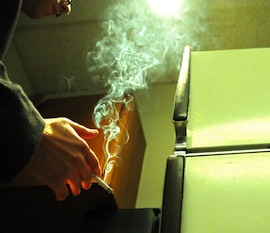
We’ve long been aware of the dangers of secondhand smoke, but new research suggests that thirdhand smoke can also cause significant damage to our DNA. Thirdhand smoke is the residue left over from cigarettes that clings to clothing, carpets, furniture and virtually all surfaces. The study also found that long-term exposure to this residue is worse than intense, short-term exposure, suggesting that the genetic damage can become worse over time. “Tobacco-specific nitrosamines, some of the chemical compounds in thirdhand smoke, are among the most potent carcinogens there are,” says researcher Lara Gundel, a scientist at the Lawrence Berkeley National Laboratory who was involved in the study. “They stay on surfaces, and when those surfaces are clothing or carpets, the danger to children is especially serious.” Humans can be exposed to thirdhand smoke through inhalation, ingestion or skin contact. Researchers say that cleaning methods like vacuuming, wiping and ventiliation are not able to completely remove the residue—and past studies have found it can remain in apartments over two months after smokers have moved out. “You can do some things to reduce the odors, but it’s very difficult to really clean it completely,” says Hugo Destaillats, a chemist also involved with the study. “The best solution is to substitute materials, such as change the carpet, or repaint.”
